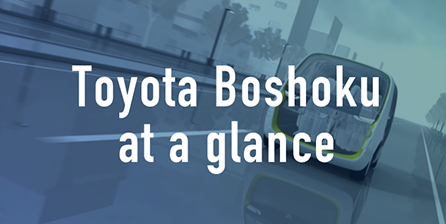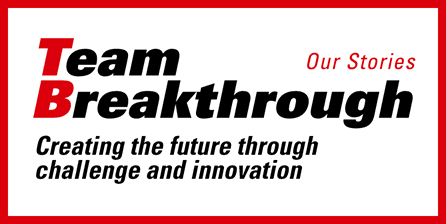| Category |
Action Item |
Specific Action |
Results of actions from 2016 to 2020 |
|
Establishment of Low Carbon Society
|
Production |
1 |
Promote the development of innovative production technology with low CO2 emissions |
- Reduce CO2 emissions from new processes by 30%, promote the development of innovative production technology
- Downsize processes, reduce transfer distance, and minimize BOM
- Reduce the amount of energy used through the development of next generation molding, decoration & assembly methods
- Promote the reduction of CO2 emissions through the introduction of cogeneration equipment
|
- Formulated medium- and long-term goals for CO2 reduction by 2030 through the development of production technologies
- Installed gas cogeneration equipment at Sanage Plant
- Implemented high-efficiency enhancements to cogeneration facilities at Sanage and Gifu plants
|
| 2 |
Promote the use of renewable energy suitable for individual countries and regions |
- Expand the areas to introduce renewable energies, considering the characteristics of individual countries and regions (Economic efficiency/Reduction of CO2 emissions)
|
- Introduced renewable energies tailored to the conditions in each country and region
|
| 3 |
Study the possibility of utilizing next generation energy within the company, and define the mid- to long-term outlook for the utilization of such energy |
- Study the possibility of utilizing next generation energy for processes and motors, and clarify the outlook for the utilization of such energy
|
- Considered switching to next-generation energy through energy metering of processes and motors, and by identifying energy volumes
- Considered carbon recycling, including the use of low-carbon hydrogen and methanation*1 / CO2 capture, aiming for carbon neutrality
|
| 4 |
Minimize the CO2 emissions in daily production activities |
- Thoroughly eliminate waste in energy use through the pursuit of improved productivity and energy Just In Time activities
- Reduce CO2 by completing investment zero items decisively, and promote and maintain the activity
- Actively replace low-efficiency equipment with high-efficiency equipment
- Promote the understanding and reduction of the energy basic unit for products & processes
|
- Implemented improvements through energy conservation audits and energy conservation patrols
- Promoted activities to complete 40 items for energy-saving improvement
- Formulated a medium- to long-term renewal plan for motor equipment on a global basis
- Promoted KPI activities in each process unit and completed development of a management system to reduce energy consumption
|
| Product |
5 |
Product development that contributes to top-level fuel efficiency |
- Reduced product weight (Seat, interior, filter/power train)
- Heat management (Reduced air-conditioning load through the development of heat insulation materials)
|
- Commercialized door trims employing high impact-resistant plastic (approx. 20% lighter than conventional trims)
- Commercialized cylinder head covers for TNGA*2 (approx. 30% lighter than conventional covers)
- Developed and commercialized heat-shielding ceilings (reduced air-conditioning load by reflecting infrared rays)
|
| 6 |
Promote product development to support next generation automobiles |
- Development of high efficiency technology for filters and power trains
⇒ Increase the mass production of HV motor components and FC components
|
- Expanded orders for HEV motors and increased mass production
- Won orders for FC (fuel cell) components and commercialized products
|
| 7 |
Develop and commercialize products using plant-derived materials |
- Utilization of plant-derived materials for automotive parts
|
- Commercialized door trims made of kenaf base material
- Recycled kenaf base material into wood decks for Misawa Homes Co., Ltd.
|
|
Target regarding to No.1–7
|
- Global (Basic unit)
Target: 40.9t-CO2/thousand units
Result: 40.4t-CO2/thousand units 
- Toyota Boshoku (Basic unit)
Target: 17.4t-CO2/thousand units
Result: 17.4t-CO2/thousand units 
- Toyota Boshoku (emissions)
Target: 56,805t-CO2
Result: 50,473t-CO2*3 
|
| Logistics |
8 |
Reduce CO2 emissions through the pursuit of efficient logistics activities |
- Reduce the CO2 emissions through improved transportation efficiency and further improvement of activities with low fuel efficiency
|
Target: 8,488t-CO2
Result: 6,590t-CO2 |
| Establishment of Recycling based Society |
Production |
9 |
Reduce the amount of water used in production activities and wastewater |
- Promote innovative activities including line modification with downsizing (Development of processes with minimum consumption)
- Continue promoting water usage reduction activities in consideration of the water situation in individual countries and areas.
- Eliminate waste
- Reduce the water consumption by eliminating waste and increasing efficiency
- Reduce the amount of water used by recycling
|
- Achieved complete recycling of waterjet wastewater from the carpet production process
- Achieved zero wastewater by building system for recycling water treated in septic tanks
- Developed cooling and circulating water purification system (Weets)
- CDP Water Security A: FY2020
|
| Product |
10 |
Reduce the use of fossil fuel resources through the utilization of plant-derived materials |
- Promote the use of recycled materials & drive further recycling
- Promote the development & design enabling effective use of resources through the further utilization of plant-derived materials
|
- Recycled kenaf base material into wood decks for Misawa Homes Co., Ltd.
- Joint development of high-impact resistant plastic with Toyota Central R&D Labs, Inc.: Combining polyamide 11 (PA11), a 100% inedible plant-derived resin, and the petroleum-derived resin polypropylene (PP), the material is formed into a “salami structure” by controlling dispersion of the resins at the nanometer level, resulting in a plastic with approximately ten times the impact strength of PP
|
| Production |
11 |
Reduce the amount of waste generated in production activities and promote the effective use of resources |
- Development of production technology to generate less waste
- Promote the minimization of waste through daily Kaizen activities
- Promote the production of RSPP*4 effectively utilizing resources (waste)
|
- Introduced a paint residue surfacing system to reduce waste by improving collection efficiency
- Achieved in-house recycling of waste from other plants into RSPP raw materials
|
|
Target regarding to No.11
Definition of zero direct landfill waste: Rate of direct landfill waste is less than 1%
|
- Japan
Target: 1.65t/1,000 units
Result: 1.53t/1,000 units
- Toyota Boshoku
Target: 1.81t/1,000 units
Result: 1.15t/1,000 units
|
| Logistics |
12 |
Reduce the amount of packaging materials used in logistics activities and effective use of resources |
- Promote the use of returnable containers and lighter-weight packaging materials. Further promote the reduction of packaging materials used
|
- Target: 2,894t
- Result: 1,961t
|
| Establishment of Symbiotic Society |
General |
13 |
Promote the environmental social contribution programs through forest-creating activities / forest conservation activities |
- Promote strengthening of forest-creating and greening activities through social contribution activities
[No. of trees planted: 170K trees in 5-year period (Cumulative No.: 500K trees)]
|
- Strengthened promotion of tree planting and greening activities through social contribution activities
FY2021 result: 61,349 trees (plan: 54,000 trees)
5-year period: 202,639 trees (plan: 170,000 trees)
Cumulative total: 536,431 trees (plan: 500,000 trees)
|
- Promote forestation activities in collaboration with NPOs
|
- Promoted tree-planting activities in cooperation with NGOs (included in FY2021 figure above)
|
| Environmental Management |
General |
14 |
Promote the reinforcement of the consolidated environmental management |
- Build the structure to promote 2050 Environmental Vision and develop a scenario/road map to achieve the targets
- Toward 2050, promote the development of products, materials and methods and clarify the outlook for such development
- Strengthen the environmental burden reduction activities through the enhancement of the activities of the Environmental Committee
- Further promote continuous improvement through the enhanced operations of the environmental management system
|
- Publication of 2050 Environmental Vision and 2020 Environmental Action Plan, and promotion of activities
- Formulation of 2030 CO2 reduction scenario and its global rollout
- FY2020: 1 anomaly
- FY2021: 1 anomaly
- Maintained ISO14001 certification
|
| 15 |
Strengthen the chemical substance management system |
- Expand and strengthen the control of chemical substances contained in products
- Promote the replacement with substances with less environmental burden through the development of alternative technologies
- Establish a control structure for processed chemicals including raw materials and indirect materials
|
- Established a task team to expand and strengthen the management of chemical substances in products, and bolstered the system for these efforts
- Preemptively addressed regulations governing Deca-BDE*5 and four phthalate plasticizer substances
|
| 16 |
Reduce the VOC*6 emissions from production activities |
- Promote continuous reduction of VOC emissions through daily improvement activities
- Reduce the amount of waste chemical substances through the introduction of VOC treatment equipment and the development of processing methods
|
- Target: 508t
- Result: 432t
|
| 17 |
Promote environmental activities in collaboration with business partners (suppliers) |
- Strengthen the cooperation with suppliers to promote environmental activities
- Promote collaboration to establish a structure to work on climate change, water scarcity, resource recycling and environmental symbiosis
|
- Published revised version of Green Procurement Guidelines
- Conducted educational activities through cooperative associations
- Conducted CSR seminars
- Conducted self-assessments
- Mutual study by cooperative association members comprising CO2 reduction working group activities
|
| 18 |
Promote the environmental management in product development |
- Establish a target management system of Life Cycle and promote the environmental burden reduction activities in the development & design phases
|
- Completed LCA calculation for vehicle models and products, and set target values for 2040
- Expanded benefits in each component field and completed collation of issues
|
| 19 |
Strengthen environmental education to pass the environmental conservation activities on to future generations |
- Organize "Environmental seminars" in collaboration with NPO to spread the activities
- Continue to provide visiting education programs (Tailored education programs to meet the demand of local schools)
|
- Conducted study tours for local residents in collaboration with Toyota City
- Continued to provide visiting education programs (two schools)
|
| 20 |
Enhance communication with stakeholders through active disclosure of environmental information |
- Communicate activity information to all the employees through internal newsletters/briefing sessions
- Further enhance the provision of environmental information through Toyota Boshoku Report and other means
- Disclose information to the environmental assessment agency proactively and enhance communication activities
|
- Continuously introduced environmental initiatives through the Toyota Boshoku Report, internal newsletters, etc.
- Held environmental lectures and strengthened activities during Environment Month and Energy Saving Awareness Month
- Endorsed the TCFD
- Disclosed information to CDP
- Water Security A: FY2020
- Supplier Engagement A: FY2021
|
assurance symbol (click here for details).





